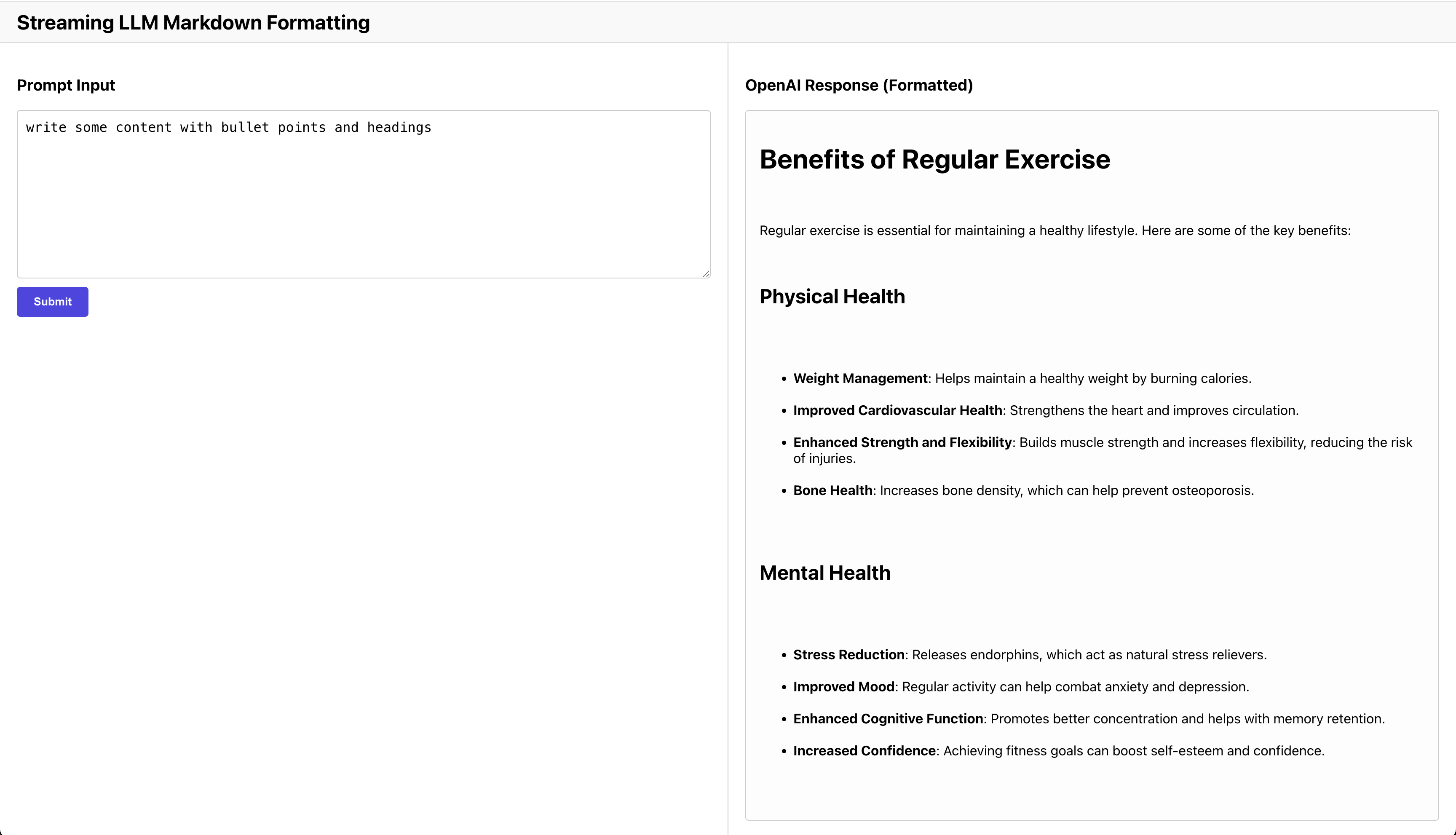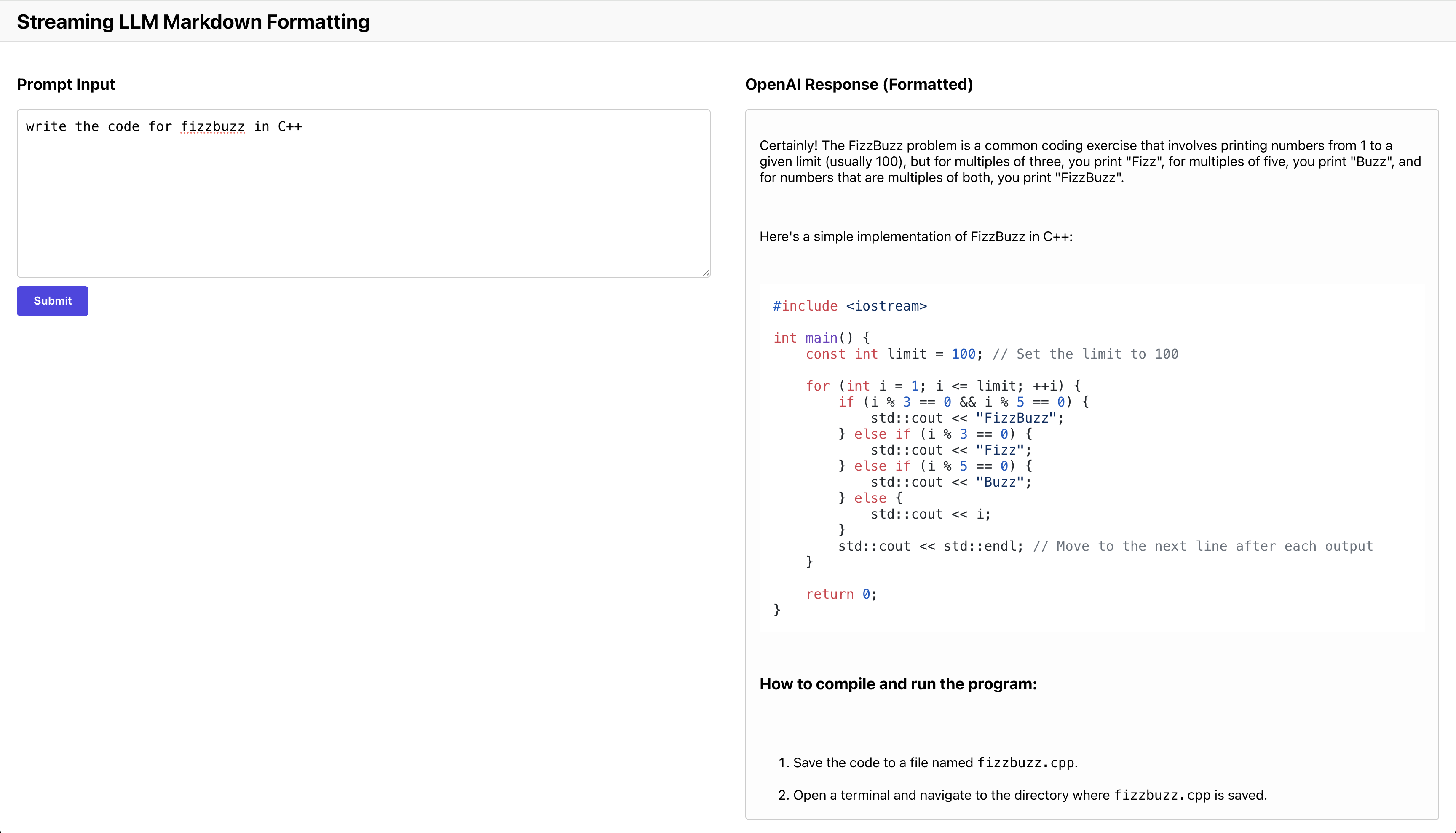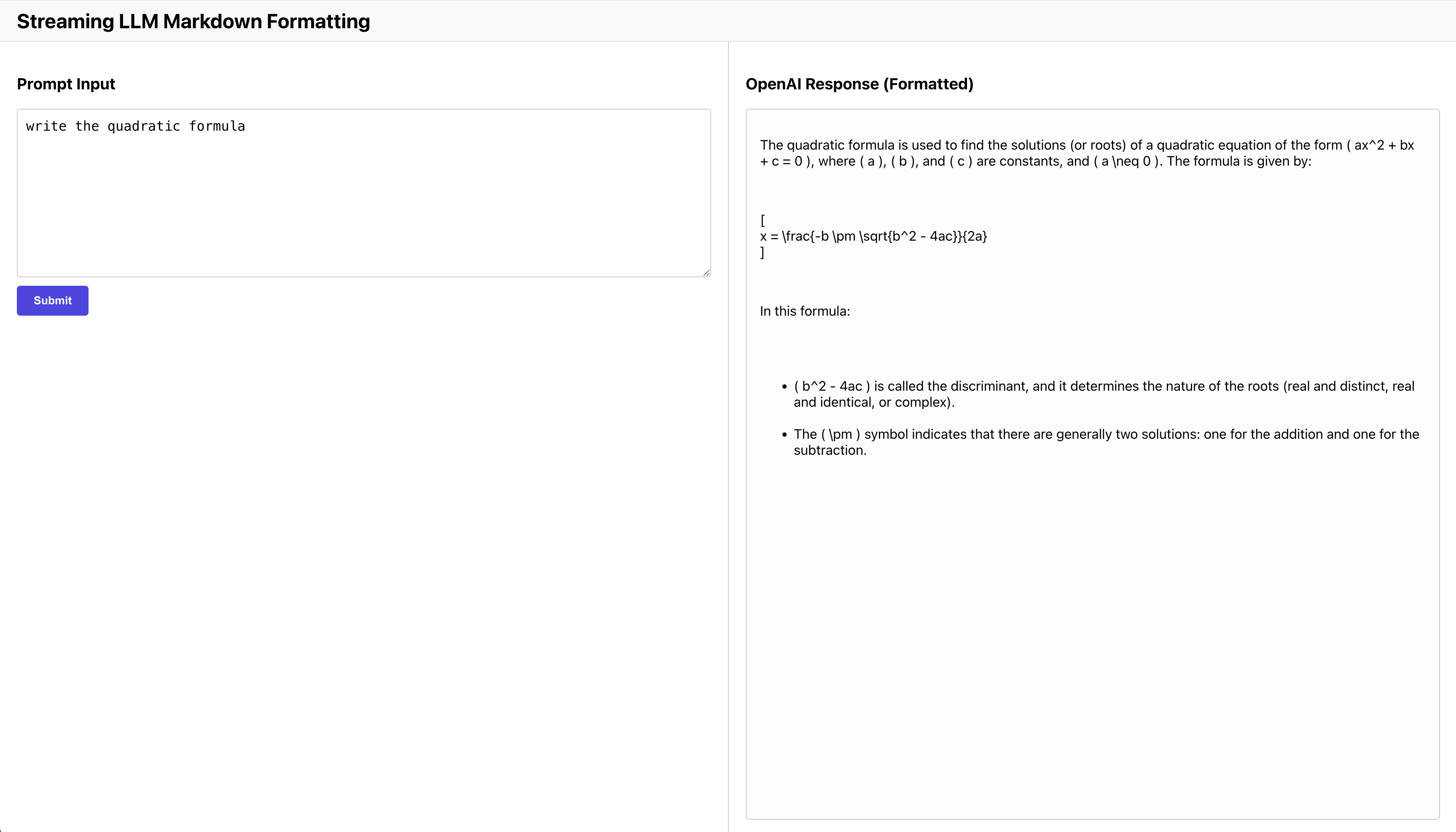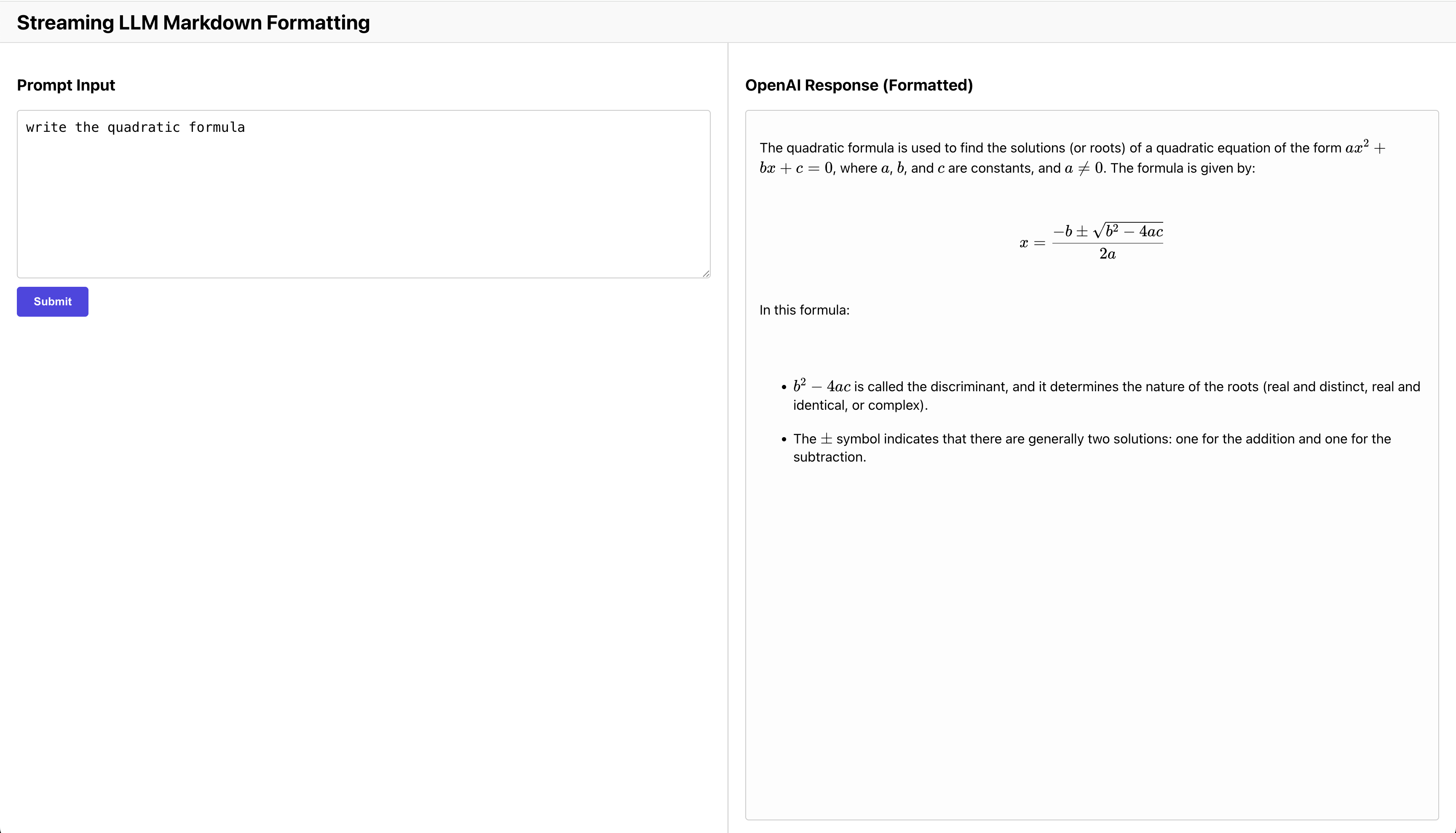How to Nicely Format Streaming OpenAI API Output for the Web
When I was building HinterviewGPT, I was pretty surprised to discover that one of the most difficult parts was making the raw OpenAI API output look nice on the screen. Everyone has used ChatGPT at this point and users are accustomed to seeing nicely formatted text, code and even math. In order for a product to look professional, the output formatting must at least be on par with ChatGPT. HinterviewGPT is a React app and I soon learned that this is not as easy as I had first assumed.
First some context, HinterviewGPT is a web app that serves as a platform to help users prepare for job interviews. It allows users to generate interview questions and also study them with a personal AI tutor. Both of these features require nicely formatted ChatGPT API formatted output.
Out-of-the-box, the OpenAI API’s output is in markdown format. In order for this to be shown on an actual web page this markdown needs to be converted to HTML. Also, since I was using the streaming API, this formatting needed to be done in a streaming fashion. After a lot of struggling i.e. trying a bunch of React libraries where some worked, some didn’t, some seemed to work only to realize days later that they caused a memory leak… I finally made it work. In this blog post I’ll refer to this instructive example repo I created which is a simple React project that renders markdown from streaming OpenAI API output.
So let’s begin with text formatting.
Text Formatting
The backbone for markdown formatting in my project was react-markdown. Text formatting works well out-of-the-box using this component. Here is what text formatting looks like from my example repo

To be clear, the left pane has a text input where the prompt is entered and when the submit button is clicked the OpenAI API is called in streaming mode using the entered prompt. The resulting markdown stream is passed through the formatter and displayed on the right pane. As you can see, the text, headings, and bullet lists are formatted correctly. And of course the styling can be changed to your liking.
The right pane has the following structure.
<div>
<h3>OpenAI Response (Formatted)</h3>
<div>
<ReactMarkdown
children={markdownOutput}
remarkPlugins={[]}
rehypePlugins={[]}
/>
</div>
</div>
Here markdownOutput is the output from the OpenAI API - so it is simply passed into the children parameter.
Code Formatting
Next up is code formatting. This basically means making the generated code look nice and have syntax highlighting. This
requires the rehype-highlight plugin for react-markdown. Once installed, add it to the rehypePlugins parameter.
<div>
<h3>OpenAI Response (Formatted)</h3>
<div>
<ReactMarkdown
children={markdownOutput}
remarkPlugins={[]}
rehypePlugins={[rehypeHighlight]}
/>
</div>
</div>
The result looks like the following.

As you can see the code is displayed with syntax highlighting as desired. You can also experiment with different highlighting
plugins if you don’t like the look (e.g. rehype-prism).
Math Formatting
Finally we also need to be able to display generated math content. Unfortunately this is the trickiest one. For this
we need two plugins - rehype-math and rehype-katex. rehype-math detects the math parts of the generated markdown
and converts it into an AST (abstract syntax tree), then rehype-katex converts the AST into something that looks like
LaTeX formatting in the browser. The code looks like the following.
<div>
<h3>OpenAI Response (Formatted)</h3>
<div>
<ReactMarkdown
children={markdownOutput}
remarkPlugins={[remarkMath]}
rehypePlugins={[rehypeKatex, rehypeHighlight]}
/>
</div>
</div>
And the result looks like the following.

Hey, that doesn’t look right! The reason for this is the OpenAI API generates math with inline statements like \(...\)
or block statements like \[...\] but remark-math only recognizes $...$ and $$...$$ statements. To fix this we
need to add a pre-processing step that converts from the former to the latter.
const preprocessLaTeX = (content) => {
return content
.replace(/\\\[(.*?)\\\]/gs, (_, eq) => `$$${eq}$$`) // block math
.replace(/\\\((.*?)\\\)/gs, (_, eq) => `$${eq}$`); // inline math
};
So let’s change the code to incorporate this pre-processing step.
<div>
<h3>OpenAI Response (Formatted)</h3>
<div>
<ReactMarkdown
children={preprocessLaTeX(markdownOutput)}
remarkPlugins={[remarkMath]}
rehypePlugins={[rehypeKatex, rehypeHighlight]}
/>
</div>
</div>
and the result is

That looks much better. Using regex is always a bit risky here but unfortunately it is required since the way the
OpenAI API generates math seems to be incompatible with the way remark-math parses it.
To summarize, in this blog post we discussed how to render streaming OpenAI API markdown output into nicely formatted HTML for text, code and math content. Again, in this blog post I have referred to this example repo, specifically the App.js file.